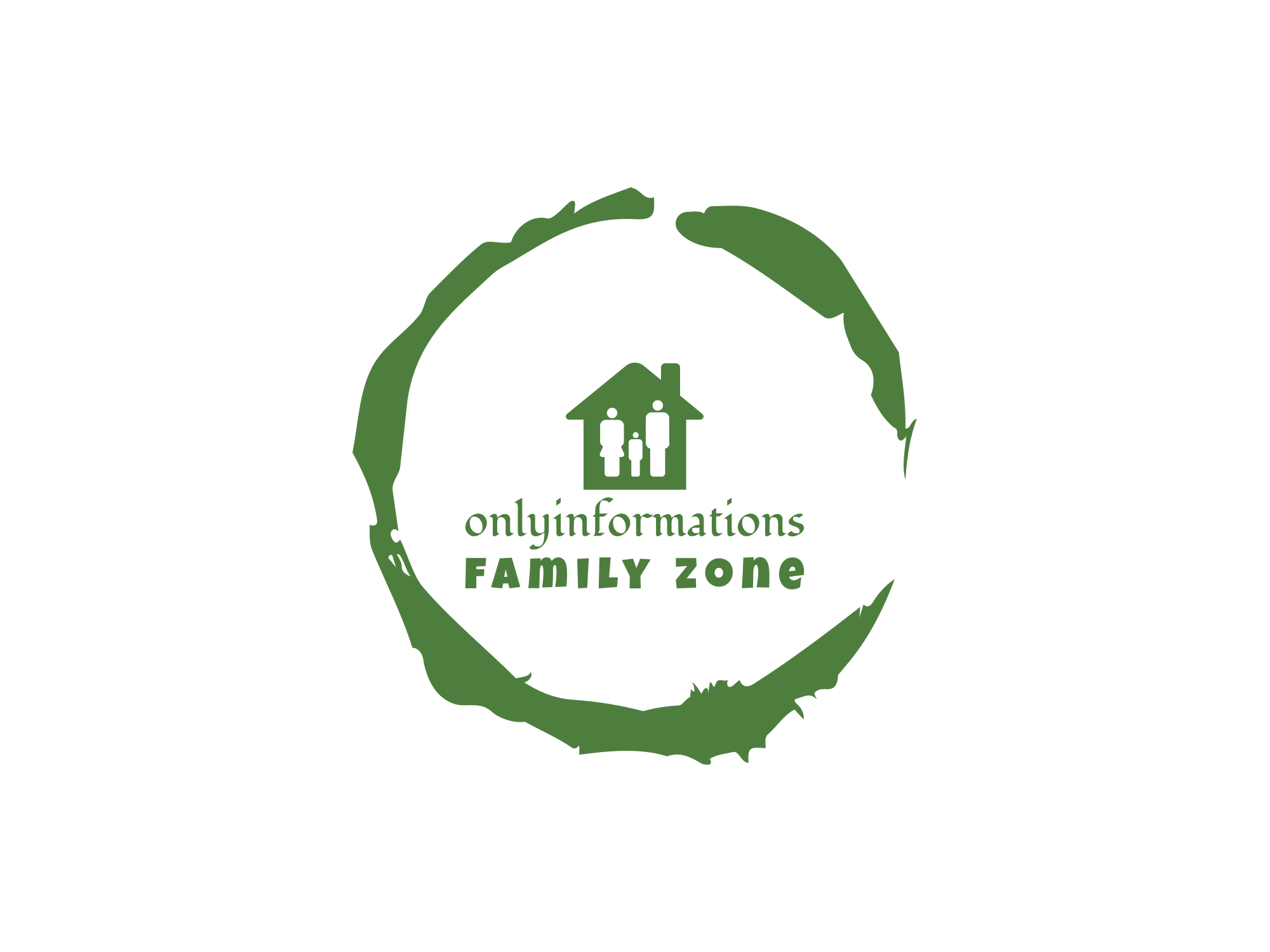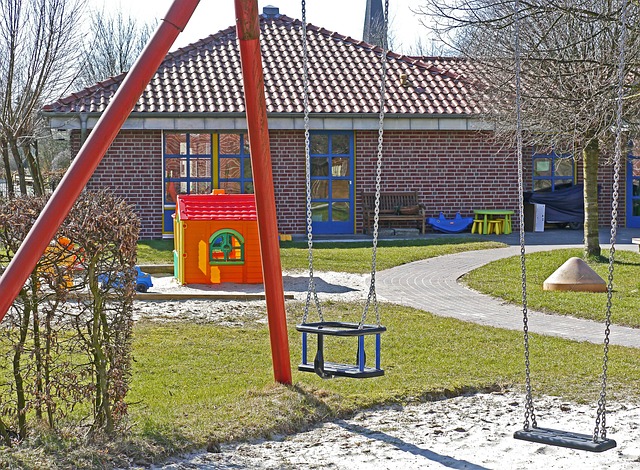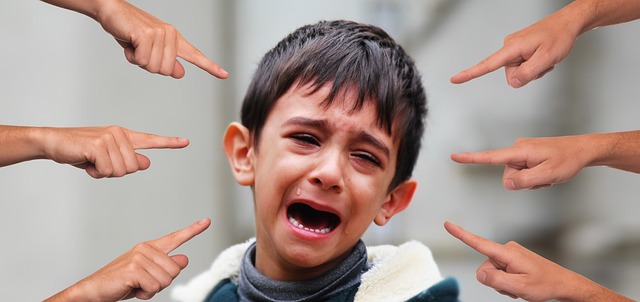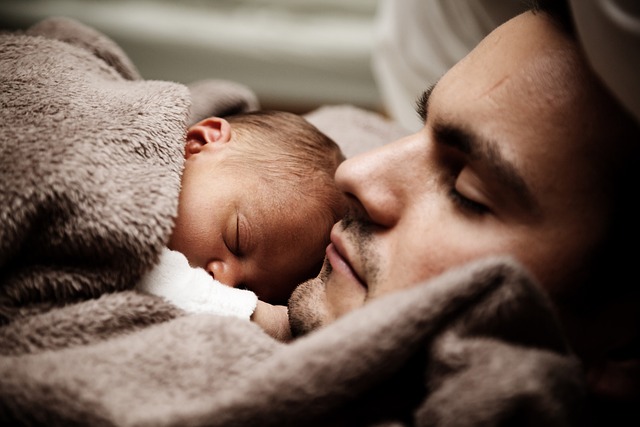Unsafe Living Conditions For Children! What To Consider?
Protecting Their Well-being and Development
The well-being and safety of children are of utmost importance in any society. As adults, we are responsible for creating environments that promote healthy growth and development for the younger generation. Unfortunately, not all children are privileged to grow up in safe living conditions. This informational blog article aims to shed light on Unsafe Living Conditions For Children and what are the impacts as well as their potential consequences on their physical, emotional, and cognitive well-being.
Lack of Adequate Shelter:
A secure and suitable shelter is crucial for a child’s safety and overall development. Unsafe living conditions may include overcrowded spaces, dilapidated housing structures, or exposure to environmental hazards such as mould, lead paint, or hazardous wiring. These conditions can lead to accidents, injuries, respiratory problems, and long-term health issues.
Absence of Basic Utilities:
Children require access to essential utilities for a healthy and nurturing environment. Poor sanitation can spread diseases, while limited access to clean water compromises hygiene practices, causing various health problems. Inadequate or unreliable electricity can hinder proper lighting, heating, or cooling, affecting a child’s comfort and safety.
Exposure to Violence and Abuse:
Children exposed to violence, abuse, or neglect within their living environment suffer severe emotional and psychological consequences. Such conditions include domestic violence, physical or emotional abuse, substance abuse, or weapons in the household. These toxic environments can lead to trauma, impaired emotional development, low self-esteem, and long-term mental health issues.
What Impact when There is Lack of Nutrition and Food Insecurity
Adequate nutrition is vital for a child’s growth and cognitive development. As long as, there is any kind of limited access to healthy and nutritious food leads to malnutrition, stunted growth, and cognitive impairments. Furthermore, food insecurity can contribute to poor academic performance and the risk of another serious disease.
Inadequate Education Opportunities:
Every child has the right to access quality education to reach their full potential. Unsafe Living Conditions For Children may result in limited educational opportunities due to proximity to schools, lack of resources, or unstable living situations. Inadequate education can perpetuate cycles of poverty, limiting a child’s prospects and opportunities.
Presence of Hazardous Substances:
This may also include exposure to hazardous substances like chemicals, pesticides, or drugs within the living environment poses significant health risks for children. Because these substances can lead to poisoning, respiratory problems, developmental delays, and long-term health complications. Proper storage, handling, and disposal of such substances are crucial to ensure a safe living environment for children.
Lack of Emotional Support and Stable Relationships:
Every child in our society thrives in environments where they receive love, support, and stable relationships. So living conditions that lack emotional support, neglect, or unstable family dynamics can harm a child’s social and emotional development and are considered Unsafe Living Conditions For Children. Therefore, a lack of positive role models and nurturing relationships may lead to behavioural problems, difficulties forming attachments, and a higher susceptibility to mental health issues.
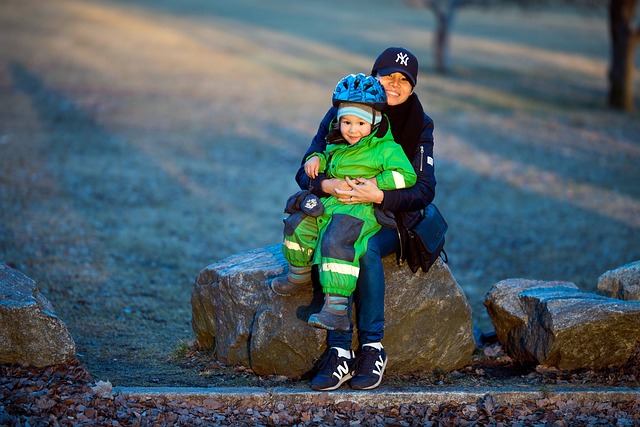
Other Mind Set
As much as we can believe that Safe and nurturing living conditions are fundamental for a child’s well-being and development. So our collective responsibility is to create environments where children can grow, thrive, and reach their full potential. Also Identifying and addressing Unsafe Living Conditions For Children, such as inadequate shelter, absence of essential utilities, exposure to violence and abuse, lack of nutrition, limited education opportunities, presence of hazardous substances, and the absence of emotional support, are crucial steps toward ensuring shinning and secure future for our children. Additionally, by prioritizing our youngest members’ safety, health, and happiness, we can foster a more inclusive and compassionate society for generations.
Acceptable living conditions for a child
Nurturing Healthy Development: Examining Acceptable Living Conditions for Children
To avoid Unsafe Living Conditions For Children we need to ensure the provision of Secure and healthy environments which is essential for their well-being and development. Moreover, Acceptable living conditions are vital in providing children with the foundation to thrive. Also, this informational material will give you proper awareness of the elements that constitute sufficient living conditions for a child, encompassing their physical, emotional, and cognitive needs.
Safe and Adequate Shelter:
In addition to avoiding Unsafe Living Conditions For Children, Ensuring the provision of adequate housing forms the foundation of acceptable living conditions for them. Also, this may include secure and structurally sound dwellings that protect children from external elements and provide a comfortable living environment. So proper insulation, ventilation, and functional utilities, such as electricity, heating, and plumbing, contribute to children’s physical well-being and safety.
Healthy and Clean Environment:
This encompasses access to clean water, proper sanitation facilities, and regular waste management services. However, Maintaining cleanliness and hygiene reduces the risk of illness, prevents the spread of diseases, and promotes overall well-being are also part of avoiding Unsafe Living Conditions For Children.
Nutritious Food and Adequate Nutrition:
Consequently ensuring the provision of nutritious food is essential for their growth, cognitive development, and overall health. Moreover, Acceptable living conditions include access to a balanced diet that meets their nutritional needs. So this entails access to fresh fruits and vegetables, proteins, whole grains, and dairy products while minimizing the consumption of processed and sugary foods. However, Adequate nutrition positively impacts a child’s physical development, energy levels, and immune system.
Quality Education Opportunities:
Since acceptable living conditions encompass access to quality education, ensuring that children have the opportunity to reach their full potential. So, this includes access to well-equipped schools, qualified teachers, and appropriate learning resources. Moreover, a conducive learning environment that encourages intellectual growth, critical thinking, and creativity is vital for a child’s cognitive and social development.
Emotional Support and Stable Relationships:
Indeed children require emotional support and stable relationships to foster healthy social and emotional development. Moreover, acceptable living conditions involve an environment where children feel loved, valued, and emotionally supported by their families or caregivers. So, Healthy family dynamics, positive role models, and nurturing relationships contribute to a child’s self-esteem, emotional resilience, and overall well-being as well as save them from Unsafe Living Conditions For Children.
Safety and Protection:
As long as Child safety is a fundamental aspect of acceptable living conditions in every corner of the world. Moreover, It entails protecting children from physical harm, abuse, and neglect. Also, adequate safety measures are essential, such as childproofing the living space, securing dangerous objects, and ensuring a safe neighbourhood. So the presence of a safe environment allows children to explore, play, and develop without unnecessary risks or exposure to harm.
Access to Healthcare:
As we know the absence of Unsafe Living Conditions For Children also involves ensuring access to appropriate healthcare services for children. In addition, this includes regular check-ups, vaccinations, and timely medical care when needed. Therefore, Adequate healthcare provision contributes to the early identification and prevention of health issues, ensuring children’s physical well-being and promoting overall development.

Other Thoughts
When we aim to avoid Unsafe Living Conditions For Children. Thereafter we or every parent accept the specific living conditions for children encompass various aspects that prioritize their safety, health, and overall development.
What is regarded as an unsafe environment for a child?
Creating a Safe Haven: Understanding What Constitutes an Unsafe Environment for a Child
Children always rely on adults forgetting their necessities to p grow and develop. Unfortunately, not all environments offer the level of safety and security children deserve. This information aims to identify the key factors contributing to such circumstances. We can proactively protect children and prioritize their well-being by understanding these factors.
Neglect and Lack of Basic Care:
One of the most fundamental aspects of a safe environment for a child is the presence of attentive and responsible caregivers. Neglect, which encompasses both physical and emotional neglect, can significantly compromise a child’s safety. Neglect may manifest in inadequate nutrition, lack of proper hygiene, insufficient medical care, and absence of emotional support. Children left to fend for themselves or receive inconsistent care are at risk of physical harm, illness, and psychological distress.
Physical Abuse:
Physical abuse involves intentionally causing harm or injury to a child. It can take various forms, including hitting, shaking, burning, or any other act that inflicts physical pain or discomfort. An unsafe environment may have a high incidence of physical abuse, resulting in long-lasting physical and psychological trauma for the child.
Emotional Abuse:
Emotional abuse is characterized by persistent actions or behaviour that negatively impact a child’s self-worth, emotional well-being, and development. This abuse includes verbal insults, constant belittlement, rejection, isolation, or manipulating a child’s emotions. An unsafe environment for a child often involves emotional abuse, leaving lasting scars on their self-esteem, trust, and ability to form healthy relationships.
Sexual Abuse:
Sexual abuse refers to any sexual activity imposed on a child without their understanding, consent, or ability to comprehend the situation. It encompasses a range of actions, from inappropriate touching to more severe forms such as rape or exploitation. An unsafe environment for a child may harbour individuals who engage in sexual abuse, leading to severe emotional, physical, and psychological trauma. Signs of sexual abuse can include sudden behavioural changes, nightmares, regressive behaviour, or a fear of specific individuals.
Exposure to Violence:
Growing up in an environment where violence is prevalent is detrimental to a child’s well-being. Witnessing domestic violence between caregivers or being exposed to violence in the community can have long-lasting effects on a child’s mental health. Children exposed to violence may develop anxiety, depression, aggressive behaviour, and an increased likelihood of engaging in violent acts themselves. An unsafe environment must be free from violence to ensure a child’s safety and healthy development.
Substance Abuse and Addiction:
An environment where substance abuse and addiction are prevalent is inherently unsafe for a child. Substance abuse by caregivers can lead to neglect, physical and emotional harm, instability, and compromised decision-making abilities. Children in such environments may suffer from neglect, exposure to dangerous substances, and an increased risk of accidental injury. Additionally, they may experience disruptions in their daily routines and lack the necessary support systems for their overall well-being.
Unsafe Living Conditions:
Children require a safe physical environment to thrive. An unsafe living condition can include inadequate sanitation, exposure to toxic substances, overcrowding, poor structural integrity, or lack of appropriate safety measures.
Ensuring the provision of secure surroundings and all necessities by parents and caregivers for children is a collective responsibility that requires proactive measures from society, families, and communities.

How to prove a Hazardous environment for a child
Unveiling the Hazards: Proving an Unsafe Environment for a Child
Establishing a hazardous environment for a child is crucial for taking appropriate measures to ensure their safety and well-being. However, proving such conditions can be challenging, often requiring gathering substantial evidence. We are trying to grab our reader’s attention to the various steps and strategies to help individuals prove the existence of a hazardous environment for a child, empowering them to take necessary actions to protect the child’s best interests.
Documenting Physical Evidence:
When attempting to prove a hazardous environment, documenting physical evidence is essential. This includes capturing photographs or videos of the environment highlighting potential dangers or unsafe conditions. Examples may include inadequate living conditions, hazards like exposed wiring or broken structures, unsanitary surroundings, or evidence of neglect or abuse. Detailed notes should accompany the visual evidence, describing specific instances and possible timestamps.
Medical Documentation:
If a child has suffered injuries or health issues due to their environment, seeking medical attention and obtaining relevant medical records is crucial. Medical documentation can provide objective evidence of physical harm or the effects of neglect, abuse, or exposure to hazardous substances. These records can be instrumental in establishing a pattern of neglect, linking injuries to specific incidents, and highlighting the impact on the child’s well-being.
Witness Testimony:
Obtaining witness testimony from individuals who have direct knowledge or have witnessed the hazardous environment can strengthen the case. Witnesses may include neighbours, teachers, family friends, or other individuals who have observed the child’s living conditions or interactions within the environment. These testimonies can corroborate evidence and lend credibility to the claims regarding the unsafe environment.
Reporting to Authorities:
If there are immediate concerns for a child’s safety, it is essential to report the hazardous environment to the appropriate authorities. This may include child protective services, law enforcement agencies, or local social services. When making a report, provide as much detailed information as possible, including specific incidents, dates, and descriptions of the hazardous conditions. Cooperation with authorities and providing any additional evidence or information they may request is vital.
Gathering Documentation:
As long as, If we suppose to establish the existence of an unsafe environment, it is crucial to gather relevant documentation related to the child’s living conditions and well-being. However, this may include school records, reports from social workers or therapists, photographs of injuries or unsafe surroundings, communications with relevant individuals or agencies, and any written or recorded statements that support the claims. Organizing and presenting this documentation clearly and concisely can strengthen the case.
Professional Assessments:
Certainly seeking professional assessments can facilitate an expert opinion on the hazardous environment and its impact on the child. Moreover, this may involve evaluations from medical professionals, psychologists, or child welfare specialists. Also, their assessments can offer valuable insights into the child’s physical and psychological well-being, the influence of the environment on their development, and potential long-term consequences. Additionally, these professional opinions can carry weight in legal proceedings or advocacy efforts.
Legal Assistance:
In complex cases or situations where legal intervention is necessary, seeking legal assistance is advisable. A family law attorney experienced in child welfare can guide navigating the legal process, advocating for the child’s rights, and presenting the evidence effectively. They can help prepare for court hearings, represent the child’s interests, and assist in seeking appropriate protective measures or custody arrangements.
Conclusion
Indeed Proving the existence of a hazardous environment for a child requires a thorough and well-documented approach. So by gathering physical evidence, obtaining medical documentation, securing witness testimony, reporting to authorities, gathering relevant documentation, seeking professional assessments, and, if needed, obtaining legal assistance, concerned individuals can work towards safeguarding the child’s well-being. It is essential to prioritize the child.

What to do if your child is unsafe at home
Ensuring Safety Above All: What to Do If Your Child Is Unsafe at Home
Discovering that your child is unsafe at home can be distressing and challenging for any parent or caregiver. However, taking immediate action to protect your child is crucial. This article guides you if you suspect your child is unsafe in their home environment. By following these recommendations, you can prioritize your child’s safety and well-being.
1. Assess Immediate Safety:
If you believe your child is in immediate danger, prioritize their safety above all else if you remove the child from the unsafe environment and seek a safe place, such as a trusted family member or friend’s home, a domestic violence shelter, or a temporary accommodation facility. Ensure your child is out of harm before proceeding with further actions.
2. Document and Gather Evidence:
As long as we need to collect a solid document as a piece of evidence that substantiates the unsafe conditions your child is experiencing. So for this puprTake photographs, videos, or detailed notes of the hazardous environment, including visible signs of neglect, abuse, or potential dangers. Additionally, if there is any document to justify any injuries your child may have sustained as well. Also, this evidence will be valuable in supporting your case and ensuring appropriate interventions.
3. Report to Child Protective Services or Local Authorities:
Contact your local Child Protective Services (CPS) or relevant authorities to report the unsafe conditions and the potential harm your child faces. Please provide them with all the evidence and information you have gathered.
4. Seek Legal Advice:
Consult a family law attorney specializing in child welfare issues. However, A legal professional is the only one who can provide you with assistance in a better way for navigating legal proceedings. They can assist in filing any necessary legal actions, such as obtaining a protective order or custody modification, to ensure your child’s safety and well-being.
5. Establish a Support Network:
Reach out to trusted family members, friends, or support organizations that can provide emotional support and assistance during this challenging time. Share your concerns and seek advice from those with experience or expertise in child welfare matters. They can offer guidance, help you remain focused, and provide a supportive environment for you and your child.
6. Prioritize Your Child’s Well-being:
Ensure that your child’s physical and emotional needs are met. If necessary, arrange for appropriate medical care, and seek counselling or therapy to help your child escape the trauma. Always give enough space for open discussion on any topic and provide a safe space for your child to express their feelings. Reassure them that their safety is your top priority.
7. Follow Through with Legal Proceedings:
If legal actions are required, actively participate and cooperate. Attend court hearings, provide the necessary documentation, and adhere to court orders or recommendations. Maintain open communication with your legal representative and inform them of any changes or developments that may affect discovering that your child is unsafe at home can be a distressing and overwhelming experience. However, you can take crucial steps to ensure their safety and well-being by taking immediate action, documenting evidence, reporting to authorities, seeking legal advice, establishing a support network, prioritizing your child’s well-being, and actively participating in legal proceedings. Remember that your child’s well-being should always be the primary focus, and seeking help and support is essential during this challenging time.
What are the factors in determining that parents are not fit?
Evaluating Parental Fitness: Factors in Determining Unfit Parents Ensuring children’s well-being is paramount, and determining parental fitness is critical to safeguarding their best interests. At the same time, most parents are capable and loving caregivers. This section explores critical factors that professionals and authorities consider when evaluating parental fitness. It is essential to note that each situation is unique, and professional assessments should be conducted to make informed decisions regarding parental fitness.
1. Abuse or Neglect:
Physical, emotional, or sexual abuse inflicted upon a child strongly indicates parental unfitness. Failure to provide adequate food, shelter, medical care, or emotional support can also contribute to a determination of parental unfitness. Evidence of abuse or neglect, supported by testimonies, medical reports, or documented incidents, significantly influences assessments of parental fitness.
2. Substance Abuse and Addiction:
Persistent substance abuse, including drug or alcohol addiction, can impair a parent’s ability to provide a safe and nurturing environment for their child. Substance abuse can lead to neglect, physical harm, unstable living conditions, and compromised decision-making capabilities. Assessments may consider evidence such as criminal records, substance abuse treatment history, drug test results, and associated incidents or repercussions.
3. Mental Health Concerns:
Parents struggling with severe and untreated mental health issues may face challenges in adequately meeting their child’s needs. Evaluations may involve professional assessments by mental health experts, medical records, and input from psychiatrists or psychologists.
4. Domestic Violence:
Domestic violence in the home poses significant risks to children. Suppose a parent is involved in ongoing or repeated incidents of domestic violence. Inindicatebe indicates their inability to provide their child with a safe and secure environment. Documentation of restraining orders, police reports, witness statements, or medical records related to domestic violence incidents may be considered in assessing parental fitness.
5. Criminal Behavior:
Parents engaged in criminal activities that jeopardize the safety and well-being of their children are often deemed unfit. Convictions for offences such as child abuse, assault, drug trafficking, or other serious crimes can strongly influence assessments of parental fitness. Criminal records, court proceedings, or evidence of the parent’s criminal behaviour can significantly determine unfitness.
6. Lack of Parental Involvement of Interest:
Consistent disengagement or disinterest in a child’s life can raise concerns about a parent’s ability to meet their child’s emotional and developmental needs. Lack of involvement may manifest as minimal contact, failure to attend important events or a demonstrated indifference toward the child’s well-being. Observations, testimonies from relevant individuals, and records of parental involvement can contribute to assessments of parental fitness.
7. Failure to Comply with Court Orders or Service Plans:
Parents who consistently disregard court orders, fail to follow service plans, or exhibit a pattern of noncompliance may be considered unfit. These actions demonstrate a need for more commitment to addressing the concerns and improving the circumstances that led to the assessment of parental fitness. Compliance records, court documents, and reports from case workers or social services can provide evidence of noncompliance.
Finally, we can determine that parental unfitness, disorder, or specific attitude or mindset should be carefully observed for sending multiple factors. Abuse, neglect, substance abuse, mental health concerns, domestic violence, criminal behaviour, lack of parental involvement, and failure to comply with court orders are key factors evaluated during assessments. It is essential to involve professionals like social workers, psychologists, and legal experts.
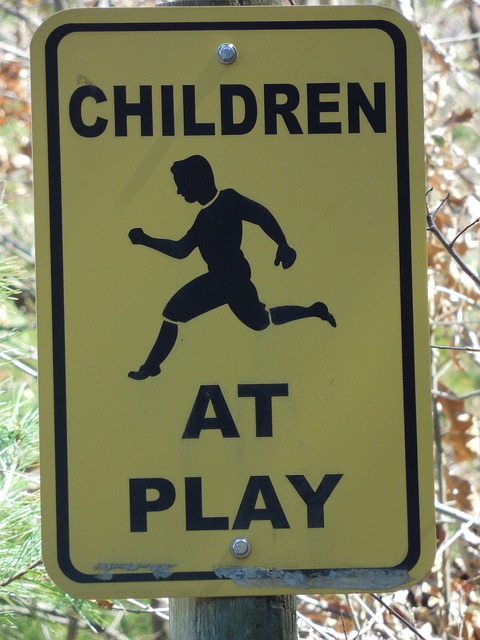
How About Unhealthy conditions for a child Apart of Unsafe Living Conditions For Children
Unveiling the Unhealthy Conditions of Child: A Comprehensive Exploration
Children are deserving of love, care, and protection consistently. Unfortunately, there are instances where children are exposed to unhealthy conditions that can have detrimental effects on their physical, mental, and emotional well-being. This article aims to provide an in-depth exploration of the various unhealthy conditions children may encounter, shedding light on the potential consequences and the importance of promptly addressing these issues.
1. Poor Nutrition and Malnutrition:
Adequate nutrition is crucial for a child’s growth and development. Unhealthy conditions related to nutrition can arise from food insecurity, limited access to nutritious meals, or a lack of knowledge regarding proper nutrition. Insufficient intake of essential nutrients can result in stunted growth, weakened immune systems, cognitive impairments, and increased susceptibility to diseases.
2. Inadequate Healthcare:
Children require regular medical care to monitor their growth, detect potential health issues, and receive necessary immunizations. Unhealthy conditions arise when children lack access to quality healthcare services, including routine check-ups, vaccinations, and timely treatment for illnesses or injuries. Limited healthcare can lead to untreated conditions, compromised development, and an increased risk of long-term health problems.
3. Environmental Hazards:
Children may be exposed to various environmental hazards, such as air pollution, toxic substances, or unsanitary living conditions. Polluted air, contaminated water sources, and exposure to hazardous chemicals can negatively impact a child’s respiratory system, cognitive development, and overall health. Unhealthy environments may also contribute to increased risks of asthma, allergies, lead poisoning, and other serious health issues.
4. Emotional Neglect and Lack of Mental Health Support:
Emotional neglect occurs when a child’s emotional needs are consistently unmet, leading to loneliness, low self-esteem, and a lack of emotional resilience. Children exposed to unhealthy emotional conditions may experience anxiety, depression, or behavioural problems. Insufficient access to mental health support further exacerbates the situation, hindering a child’s ability to cope with emotional challenges and seek appropriate help.
5. Exposure to Violence and Trauma:
Children who are exposed to violence within their homes or communities face significant physical and psychological risks. Witnessing or experiencing violence can cause severe emotional trauma, leading to anxiety, depression, post-traumatic stress disorder (PTSD), and difficulty forming healthy relationships. These unhealthy conditions can hinder a child’s well-being and compromise their future development.
6. Substance Abuse within the Family:
Living in an environment where substance abuse is prevalent can be highly detrimental to a child’s health and safety. Substance abuse disrupts family dynamics, compromises parental care, and exposes children to potential neglect, violence, and unstable living conditions. Children growing up in such environments most of the time have a great impact in terms of bad character and mindset for their whole life, along with facing long-term physical and psychological consequences.
7. Educational Disadvantage:
Lack of access to quality education or limited educational opportunities can significantly impact a child’s prospects and overall well-being. Children growing up in unhealthy educational conditions may experience lower academic achievement, little cognitive development, and reduced opportunities for personal growth. Educational disadvantage perpetuates the cycle of poverty and hinders a child’s ability to reach their full potential.
The unhealthy conditions children face pose significant threats to their physical, mental, and emotional well-being. Also, Poor nutrition, inadequate healthcare, exposure to environmental hazards, emotional neglect, violence, substance abuse, and educational disadvantage contribute to a child’s unhealthy circumstances. Therefore, Society, families, and communities must prioritize the well-being of children, advocate for their rights, and take proactive measures to address these conditions. So afterwards, we can expect to witness healthier environments that allow children to thrive and reach their full potential by addressing these issues.
